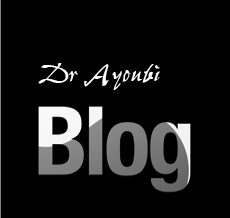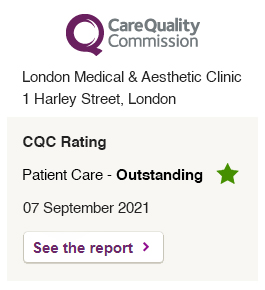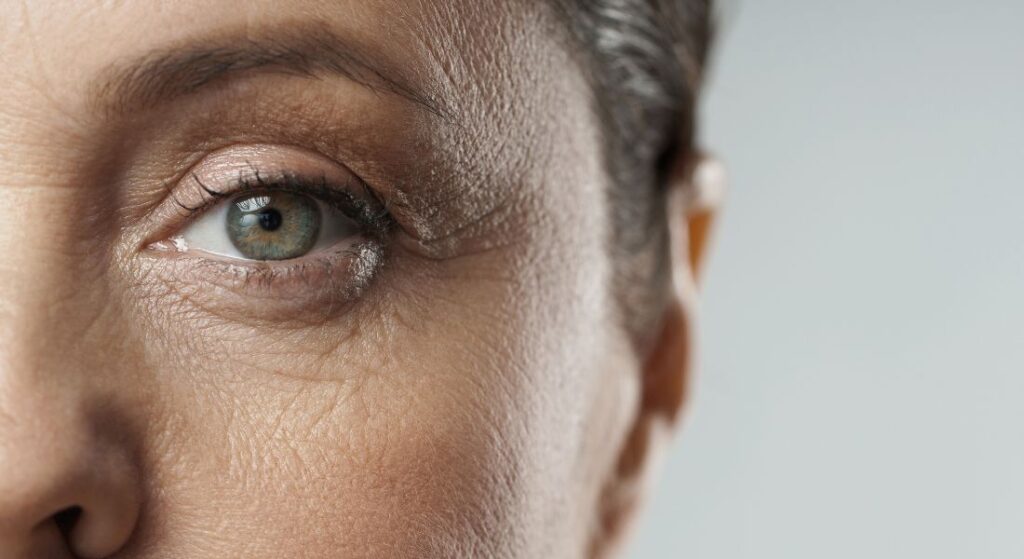
The under-eye area is one of the most delicate and expressive parts of your face. Unfortunately, it’s also one of the first to show signs of ageing from hollowing and fine lines to dark shadows that make you look tired even when you’re not.
With the rise of advanced collagen-stimulating injectables, many people wonder whether Sculptra, a bio-stimulatory filler, can safely and effectively rejuvenate this fragile region.
The short answer: it can help in certain cases but it’s not the first-line treatment for everyone, and it must be used with exceptional skill.
This guide explores how Sculptra works, what makes the under-eye area so sensitive, and what you should know before considering treatment.
Understanding Sculptra: What It Is and How It Works
Sculptra is a unique injectable treatment made from poly-L-lactic acid (PLLA) a biocompatible substance that stimulates your body’s own collagen production.
Unlike traditional dermal fillers, which add immediate volume with substances like hyaluronic acid, Sculptra works gradually. It rebuilds your skin’s structure over several months, creating natural, long-lasting rejuvenation.
How It Works
1. Injection: The product is injected deep into the skin or tissue.
2. Collagen Stimulation: The PLLA particles trigger your body’s natural healing response.
3. Gradual Thickening: Over time, new collagen fibres form, strengthening and volumising the treated area.
4. Sustained Results: Results appear gradually and can last up to two years or more.
This makes Sculptra particularly effective for areas like the cheeks, temples, jawline, and buttocks where it can safely stimulate collagen without risk of surface irregularities.
Why the Under-Eye Area Is So Challenging
The under-eye region is one of the most complex areas to treat in facial aesthetics. It requires advanced anatomical understanding and extreme precision.
Key Challenges:
– Thin Skin: The skin under your eyes is only about 0.5 mm thick making any irregularity, bump, or shadow easily visible.
– Limited Fat Cushion: The area has little natural fat, so filler placement must be meticulous to avoid lumpiness.
– Lymphatic Sensitivity: Poor injection technique can disrupt fluid drainage, leading to puffiness or swelling.
– High Vascular Density: Numerous blood vessels increase the risk of bruising or rare vascular complications.
Because of these factors, not all injectables are suitable for this region and Sculptra must be approached with extreme caution.
Is Sculptra Approved for Use Under Eyes?
Technically, no Sculptra is not FDA-approved for use in the under-eye area. Its official approvals cover deep facial hollows, cheeks, temples, jawline, and other regions requiring structural rejuvenation.
However, some highly experienced aesthetic practitioners use it “off-label” meaning they apply it beyond its official indication to carefully treat certain under-eye hollows in select patients.
When performed correctly, this can deliver smoother transitions between the under-eye and upper cheek, softening shadows and improving texture.
But because this area is delicate, not everyone is a suitable candidate.
When Sculptra May Be Appropriate Under Eyes

Sculptra can be used under the eyes in very specific cases, primarily when:
– The hollowing or tear trough is due to loss of deep structural support (not just superficial thinning).
– The patient has thicker skin with good elasticity.
– There’s no significant puffiness, fluid retention, or eye bags.
– The goal is to improve gradual collagen quality, not immediate volume.
In these situations, injecting Sculptra just beneath the orbital area (not directly under the eye) can enhance the transition between the cheek and lower eyelid, restoring a youthful contour.
When Sculptra Should Not Be Used Under Eyes
There are also clear cases where Sculptra is not recommended for the under-eye area:
– Very Thin or Translucent Skin – The product may become visible, leading to uneven texture.
– Existing Eye Bags or Puffiness – It can worsen fluid retention.
– Loose or Crepey Skin – Sculptra won’t correct laxity; other treatments may be better suited.
– Deep Tear Troughs – These often require precise hyaluronic acid filler placement, not biostimulatory injection.
For most patients with fine lines, dark circles, or surface thinning, alternative treatments are safer and more effective.
Risks and Complications
When used improperly or injected too close to the skin surface, Sculptra can cause unwanted side effects.
Potential Risks Include:
– Nodules or Lumps: Caused by uneven collagen stimulation or superficial placement.
– Swelling or Puffiness: Especially if the lymphatic flow is disrupted.
– Prolonged Bruising or Redness: Due to the area’s rich blood supply.
– Overcorrection: The gradual nature of Sculptra means it’s possible to add too much before the full results appear.
– Asymmetry: Uneven injection patterns may cause visible differences between eyes.
For these reasons, experience is everything when using Sculptra near the eyes. The injector must have an intimate understanding of the orbital anatomy, tissue layers, and collagen response timing.
How Experienced Practitioners Approach the Under-Eye Area
At LMA Clinic, treatments involving the under-eye region are handled with extreme precision.
If Sculptra is considered appropriate, the injection technique will typically:
– Avoid direct injection into the tear trough.
– Target deeper structural zones closer to the cheek, supporting the under-eye indirectly.
– Use minimal product amounts diluted for even dispersion.
– Space sessions several months apart for gradual, natural improvement.
This cautious approach reduces risk and ensures the collagen stimulation enhances rather than overwhelms the area.
Alternatives to Sculptra for Under-Eye Rejuvenation
Most under-eye concerns respond better to other targeted treatments. Depending on your symptoms, your clinician may recommend:
1. Hyaluronic Acid Fillers (Tear Trough Fillers)
These fillers (e.g., Restylane, Juvederm Volbella) are designed for delicate areas. They:
– Offer immediate results.
– Can be reversed if needed.
– Hydrate and smooth the under-eye without stimulating excess collagen.
They’re ideal for mild hollowing or shadowing caused by volume loss.
2. Platelet-Rich Plasma (PRP)
PRP uses your own blood plasma to stimulate collagen and elastin production naturally.
– Improves skin texture and tone.
– Reduces dark circles and fine lines.
– Has minimal risk of lumps or swelling.
It’s an excellent choice for people who prefer a natural, gradual rejuvenation method.
3. Polynucleotide (PN) or Bioremodelling Injections
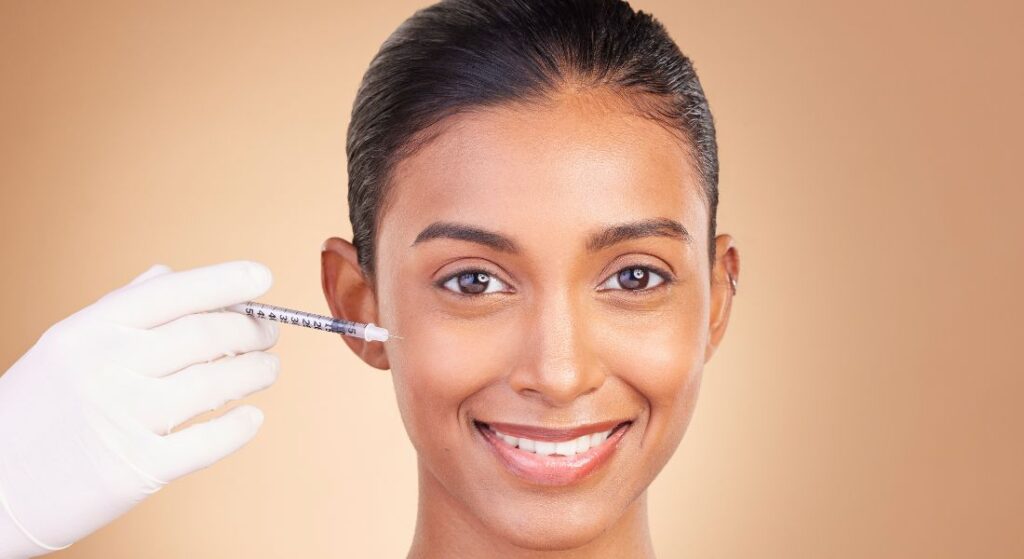
New-generation injectables like polynucleotides (derived from DNA fragments) or hybrid formulations such as Profhilo can:
– Hydrate deeply.
– Improve elasticity and skin density.
– Stimulate fibroblast activity safely, even in delicate areas.
They don’t carry the same nodule risk as Sculptra when used under the eyes.
4. Laser and Energy-Based Treatments
For pigmentation or texture issues, energy-based therapies like fractional laser, radiofrequency, or microneedling can improve overall skin quality and brightness.
These treatments tighten and smooth the skin without altering volume.
5. Topical and Skincare-Based Options
Eye creams containing peptides, caffeine, and retinol derivatives can improve circulation, firming, and brightness over time though results are subtler than injectables.
Your clinician may recommend combining skincare with clinical treatments for optimal results.
The Role of Collagen Around the Eyes
Collagen gives skin its firmness, structure, and resilience. Around the eyes, collagen production naturally declines from your 20s onwards.
That’s why early signs of fatigue and age fine lines, shadows, and hollowing tend to appear first here.
Stimulating collagen can improve thickness and elasticity, but precision matters. In the wrong layer, collagen growth can create unevenness or shadowing.
Sculptra, being a deep biostimulator, works best where there’s more tissue to support it like the mid-face and temples not in paper-thin areas like the tear trough.
Can Sculptra Be Combined with Other Treatments?
Yes and this is often the most effective approach.
For instance, Sculptra can be used in the mid-cheek area to lift and support the under-eye indirectly, while a small amount of hyaluronic acid filler smooths the immediate tear trough region.
This combination delivers a natural and refreshed result, avoiding direct risk to the thin under-eye skin.
It’s also common to combine Sculptra with:
– Skin boosters or PRP for hydration and brightness.
– Laser resurfacing for texture refinement.
– Medical-grade skincare for maintenance.
The art lies in personalising the plan never overcorrecting but harmonising the overall face.
What Results Can You Expect If Treated Safely?
When Sculptra is used carefully and appropriately, results develop gradually.
You can expect:
– Smoother transition between the lower eyelid and cheek.
– Subtle lift and firmness in the upper cheek zone.
– Reduced shadowing and hollow appearance.
– Natural-looking rejuvenation without puffiness.
Results appear over 2–3 months as collagen forms, with effects lasting up to 2 years depending on lifestyle and skin quality.
What Does the Procedure Involve?
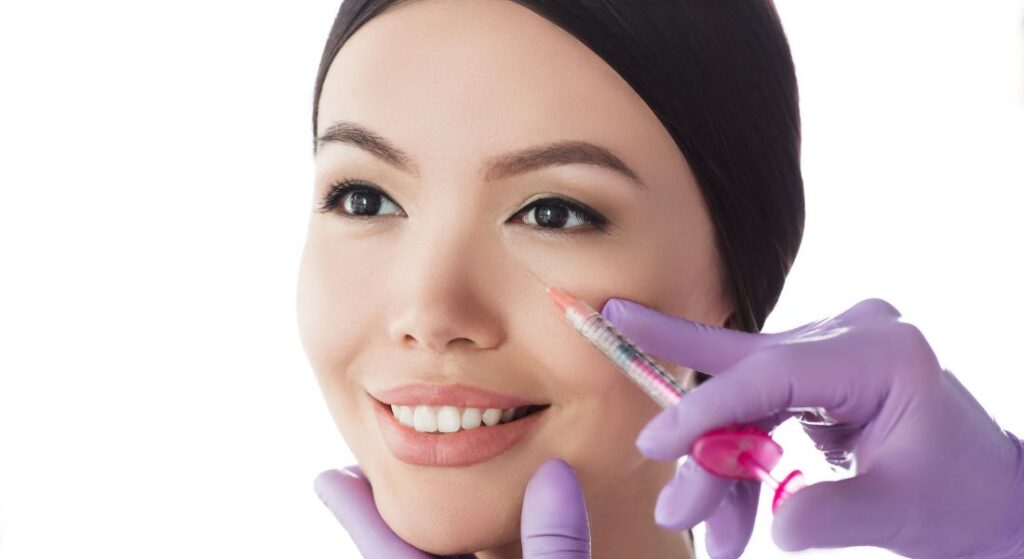
If your practitioner decides you’re a suitable candidate, treatment generally involves:
Consultation and Assessment:
Detailed examination of skin thickness, hollowness, and existing fat pads.
Preparation:
Numbing cream is applied to minimise discomfort.
Injection:
The product is diluted and injected in tiny amounts with a fine needle or cannula, usually in the upper cheek zone.
Massage:
Gentle massaging helps distribute the product evenly and prevent nodules.
Aftercare:
Avoid touching or massaging the area unless instructed. Apply cold compresses for swelling and sleep with your head elevated for 1–2 nights.
Aftercare and Recovery
Post-procedure downtime is minimal, but some temporary effects may occur:
– Mild swelling or redness for 1–3 days.
– Occasional bruising (especially if near vessels).
– Gradual collagen build-up over 6–8 weeks.
Most patients resume normal activities immediately, though avoiding strenuous exercise for 24 hours is recommended.
To prevent lumps, gentle massage may be advised using the 5-5-5 rule 5 minutes, 5 times a day, for 5 days depending on the area treated.
How to Choose the Right Injector
Your choice of practitioner determines your outcome.
Look for:
– Medical qualification (doctor, nurse prescriber, or surgeon).
– Specialist training in facial anatomy and Sculptra use.
– Extensive experience with under-eye rejuvenation.
– Before-and-after portfolio showcasing natural, consistent results.
At LMA Clinic, all Sculptra treatments are performed by medically trained professionals using advanced techniques designed for long-lasting, natural-looking outcomes.
Cost and Number of Sessions
Sculptra is typically performed as a course of treatments spaced several weeks apart.
– Most patients need 2–3 sessions for visible collagen stimulation.
– Costs vary depending on the number of vials and treatment areas.
While more expensive upfront than traditional fillers, the longevity of Sculptra often makes it a cost-effective option over time.
Key Takeaways
If you’re thinking about getting Sculptra under your eyes, here’s what you need to know. The treatment isn’t FDA-approved for this specific area, so it’s considered an off-label use something only experienced injectors should perform.
Sculptra works best for deep volume loss or structural hollowing under the eyes. However, it’s not ideal if you have puffiness, bags, or very thin skin in that area.
You won’t see instant results it takes about 8 to 12 weeks for the collagen to build up and reveal a smoother, fuller look. The good news? The effects can last for up to two to three years, which is much longer than most fillers.
Still, because the procedure requires precise technique, it carries a moderate risk and should only be done by an expert injector who has experience treating the delicate under-eye area.
The Expert Consensus
Most aesthetic specialists agree that while Sculptra can improve the mid-face and upper cheek, direct treatment of the under-eye area requires extreme caution.
Safer alternatives such as hyaluronic acid fillers, PRP, or collagen boosters are often better suited to rejuvenate the tear troughs without risking irregularities.
However, in the right patient, under the care of a skilled injector, Sculptra can subtly support the under-eye region from below, creating a rested, refreshed appearance.
FAQs About Using Sculptra Under the Eyes
1. Is Sculptra actually safe to use under the eyes?
Sculptra can be safe in the right hands, but it isn’t universally suitable for everyone. Because the under-eye area is extremely delicate and thin, only highly skilled practitioners with deep knowledge of facial anatomy should perform this treatment. When injected too close to the surface or in excessive amounts, Sculptra may cause small lumps or uneven texture. However, when it’s used strategically to support the area from the upper cheek rather than directly beneath the eye, it can produce natural, long-lasting improvements. The key is choosing an injector who has specific experience with off-label Sculptra use around the eyes.
2. Why isn’t Sculptra FDA-approved for the under-eye area?
The FDA hasn’t specifically approved Sculptra for under-eye use because the skin in this region is much thinner than in areas where the filler is commonly used, such as the cheeks or temples. Clinical trials haven’t focused on this sensitive zone, so its official approval only extends to deeper facial areas. That said, off-label use by qualified injectors is legal and often performed safely, provided the technique and patient selection are precise. You should always ask your injector whether they’ve successfully performed similar procedures and how they minimise risk.
3. How soon will I see results after getting Sculptra?
Unlike traditional fillers that show immediate volume, Sculptra takes time to work because it relies on your body’s natural collagen production. You’ll start noticing subtle changes after about six to eight weeks, with more visible improvement by the 12-week mark. The process is gradual, so you’ll likely look subtly fresher and more rested rather than drastically different overnight. This slow build-up of collagen also means your results appear more natural and last longer typically up to two or even three years.
4. What are the most common side effects after under-eye Sculptra treatment?
You might experience mild swelling, redness, or tenderness for a day or two after your session, which is perfectly normal. Some people notice small bruises around the injection sites because of the area’s rich blood supply. These usually fade within a few days. In rare cases, small nodules may form under the skin if the product isn’t massaged properly or if it’s injected too close to the surface. This is why following your injector’s aftercare instructions, such as gentle massage if advised, is essential for a smooth outcome.
5. Can Sculptra make my under-eye area look puffy?
It can, but only if it’s not used correctly. When Sculptra is injected too superficially or in patients prone to fluid retention, it can temporarily cause puffiness. However, in skilled hands, the product is placed strategically in the deeper tissue, supporting the under-eye from beneath without affecting fluid balance. If your main concern is puffiness or bags rather than hollowing, your practitioner will likely recommend alternative treatments, such as hyaluronic acid fillers, PRP, or bioremodelling injections, which are better suited to those concerns.
6. How many Sculptra sessions will I need to see results?
Most people need at least two to three sessions spaced several weeks apart to build up enough collagen for a noticeable improvement. Each session adds to the previous one, helping your skin gradually become firmer and more resilient. Your practitioner will assess your response after the first treatment and decide how many additional sessions are necessary. The advantage of this step-by-step approach is that your results remain balanced and natural, never overdone.
7. What should I avoid after getting Sculptra under my eyes?
You should avoid touching or massaging the area unless specifically instructed. It’s also best to skip strenuous exercise, saunas, or hot showers for at least 24 hours to minimise swelling. Sleeping with your head slightly elevated for the first couple of nights can help reduce any puffiness. Some practitioners recommend a gentle massage routine often referred to as the 5-5-5 rule which involves massaging for five minutes, five times a day, for five days. Always follow your injector’s personalised advice, as aftercare may vary based on technique and area treated.
8. Are there any better alternatives to Sculptra for under-eye rejuvenation?
Yes, several options may be safer and more effective depending on your specific concern. If your main issue is mild hollowing or shadows, hyaluronic acid fillers are often the go-to choice because they offer immediate results and can be reversed if necessary. For texture and brightness, treatments like PRP or polynucleotide injections can work wonders by naturally stimulating collagen and improving skin quality. In some cases, laser or radiofrequency treatments are better for tightening and smoothing. Your injector will help you decide which combination best fits your goals and skin type.
9. How long do Sculptra results last under the eyes?
If performed correctly, results from Sculptra can last up to two or three years. That longevity comes from the collagen your body produces in response to the treatment, rather than the product itself. This natural collagen slowly breaks down over time, which is why maintenance sessions every 18 to 24 months are sometimes recommended to preserve your results. Lifestyle factors like sun protection, hydration, diet, and not smoking can also make a big difference in how long your under-eye rejuvenation lasts.
10. Who is the ideal candidate for under-eye Sculptra treatment?
You’re likely a good candidate if you have deeper hollows caused by volume loss rather than puffiness or excess skin. Having thicker, resilient skin with good elasticity also helps ensure the product integrates evenly. On the other hand, if you have thin, translucent skin, prominent veins, or visible bags, Sculptra might not be right for you. The best way to find out is through a consultation with a qualified injector who can assess your anatomy and suggest whether Sculptra or another option will give you the most natural and safe result.
Final Thoughts: Is Sculptra the Right Choice for Your Under-Eye Area?
Choosing the right treatment for under-eye rejuvenation isn’t about following trends it’s about finding what’s safest and most effective for your unique skin. While Sculptra can work wonders for restoring deep volume and improving overall skin structure, it’s not suitable for everyone, especially in such a delicate area. The key is expert technique and proper patient selection.
If your concern is hollowing from collagen loss rather than puffiness or loose skin, Sculptra may help by supporting the under-eye region from below and creating a smoother transition to the cheeks. However, if your main issues are fine lines or fluid retention, other options like hyaluronic acid fillers, PRP, or bioremodelling treatments might deliver more precise and immediate results.
At the London Medical & Aesthetic Clinic, treatments are performed by experienced aesthetic professionals who understand the balance between artistry and safety. Whether you’re considering Sculptra in London or exploring alternative rejuvenation methods, a personalised consultation will help you make the right choice for natural-looking, long-lasting results. If you’re considering Sculptra in London, you can book a consultation with Dr Al-Ayoubi at the London Medical & Aesthetic Clinic.
References:
1. Lin J-Y & Lin C-Y (2022) ‘‘Nonsurgical lower eyelid rejuvenation using injectable poly-d, l-lactic acid in Asian patients’, Journal of Cosmetic Dermatology, 21(10), 4328–4331. https://pubmed.ncbi.nlm.nih.gov/35510754/
2. Montes JR, Rohrich RJ, Meckfessel MH & Le JHTD (2025) ‘‘Poly-L-Lactic Acid (PLLA-SCA) as a Safe and Effective Method to Soften Transition Between Lower Eyelid and Midface’, Journal of Drugs in Dermatology, 24(7), 692–694. https://pubmed.ncbi.nlm.nih.gov/40627579/
3. Munia C et al. (2022) ‘Changes in Facial Morphology Using Poly-L-lactic Acid (PLLA)’, [Journal]. https://pmc.ncbi.nlm.nih.gov/articles/PMC9345188/
4. Zhang Y et al. (2025) ‘Efficacy and Safety of Poly-l-Lactic Acid for Correction of Midfacial Volume Loss and/or Contour Defects’, [Journal]. https://pmc.ncbi.nlm.nih.gov/articles/PMC12273185/
5. Signori R et al. (2024) ‘Efficacy and Safety of Poly-l-Lactic Acid (PLLA) in Facial Aesthetics: A Systematic Review’, Polymers, 16(18), 2564. https://www.mdpi.com/2073-4360/16/18/2564

